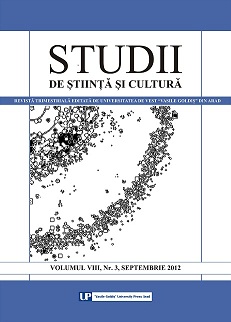Hazardul istoriei: Maramureşul tăiat în două (Repere din istoria satelor româneşti din dreapta Tisei)
History by Chance: Maramures County cut in Two (Historical Features of Right Bank Tisa Roumanian Villages)
Author(s): Camelia BurgheleSubject(s): Literary Texts
Published by: Editura Universităţii Vasile Goldiş
Keywords: Trans – Carpathia; historical Maramures; ethnical and cultural identity; traditions; national conscience; Thrans Carpathie; Maramures historique,identité ethnique et culturelle; des traditions; la conscience nationale; Transcarpatia; Maramureşul istoric
Summary/Abstract: This article presents a few features of the not so quiet Maramures history on the north of Tisa. We have to keep in mind that, practically, the „historical Maramures” expression refers to a geographical space of which only a third belongs to the Romanian state as the other two thirds belong to Ukraine: the Romanian Maramures covers 3 300 square kilometers of the 10 500 total of the whole Maramures. The main issue of this ancient romanian land has been the borders; the last two centuries have been characterised by a continuous battle for it to become united with Romania. Our field studies – mostly undergone to ethnographically survey the area – performed within the last years across Tisa have reavealed the decision of the Romanians over there to guard their ethnical and cultural identity, in spite of many opposing factors. The romanian there – even in the context of both a European and western globalization bu also a Ukrainean and Russian one – always relate themselves to their Romanian origin. They feel Romanians and they try to guard this image through all the means they have at hand: visits to their Romanian Maramures brothers, cultural exchange (as permitted), schools in Romanian language, reconstruction of orthodox or catholic churches, collecting ols objects, specific to the romanian traditional village and even opening small museums where this possibility exists, printing romanian papers, and, more important then all, the will to teach Romanian (which they speak daily within the family) to their children. Aware of the fact that they have traditions, customs, culture, popular clothing, churches, buildings and most importantly a common language with the Romanian Maramures, the Romanians in Trans – Carpathia developed a very solid national conscience. We are impressed by the „Little Romania” title that they use as related to „Great Romania”.
Journal: Studii de Ştiinţă şi Cultură
- Issue Year: VIII/2012
- Issue No: 03
- Page Range: 79-88
- Page Count: 10
- Language: Romanian

